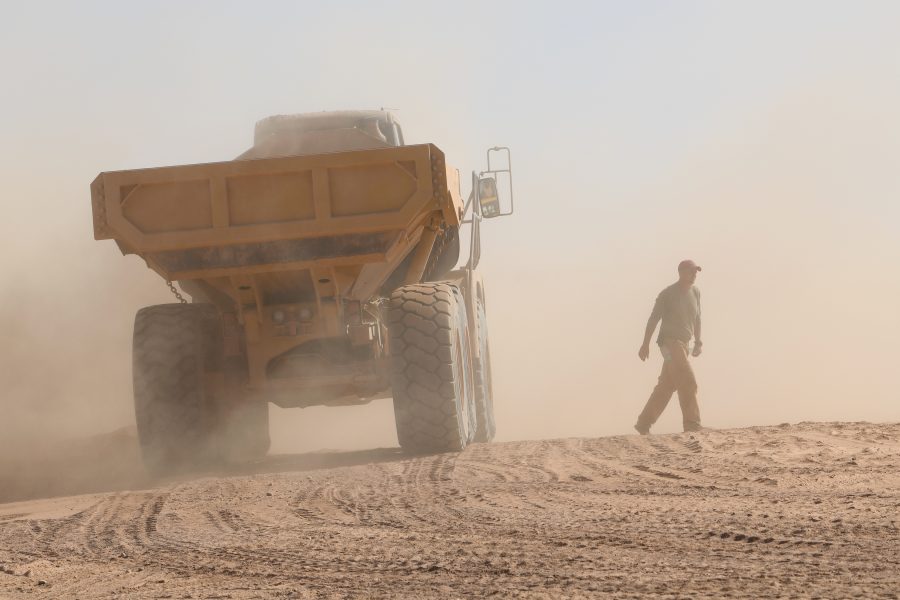The Air Force and U.S. Africa Command skirted Congressional oversight, didn’t adequately complete a site survey, and didn’t meet safety requirements in building a new operating base in Niger, leading to extended delays, cost overruns, and possibly unsafe conditions for personnel at Air Base 201, according to a newly released report from the Defense Department’s Inspector General.
Niger Air Base 201 is the largest Air Force-led construction project in the service’s history, expected to be a hub of intelligence, surveillance, and reconnaissance operations in the Sahel region of Africa and capable of C-17 operations. The IG report, released April 2, outlines a list of issues with the construction process, though both AFRICOM and U.S. Air Forces in Europe-Air Forces Africa dispute the conclusions drawn.
The base was originally tasked in 2013 with a targeted completion date of October 2017. However, the Air Force completed the airfield and base camp in May 2019 with work on infrastructure to support sustained ISR operations beginning earlier this year.
Throughout this timespan, the Inspector General report states:
- The Air Force built runway shoulders at the base without Congressional authorization. The original plans excluded these runways, with AFAFRICA “significantly” underestimating its project cost, which created a risk the service would not complete it.
- The service bypassed Congressional notification by splitting ISR construction requirements into six projects, funded with operations and maintenance dollars. With each portion under $2 million, the service was able to use O&M as opposed to military construction funding, which would have required notifying lawmakers. AFAFRICA disputed this claim, stating each ISR project is an individual “complete and usable facility.”
- The Air Force may have violated the Antideficiency Act, which prevents the service from making obligations in excess of appropriated funds. The Air Force bought 12 permanent guard towers at a cost of $3.7 million using procurement funds instead of MILCON. Additionally, these guard towers were built on foundations originally laid for temporary towers, potentially creating a safety issue. AFAFRICA disputed this, saying the towers count as equipment.
- Both AFRICOM and AFAFRICA did not perform adequate site surveys, specifically no soil sampling or topographic analysis. This caused pavement compaction and drainage problems.
- The base was not constructed to meet safety, security, and other technical requirements. For example, the base’s perimeter fence was not up to standards, requiring a waiver, and the runway’s solar airfield lighting did not conform to requirements that it provide continuous lighting.
“These problems occurred because USAFRICOM and the Air Force did not adequately oversee and coordinate with stakeholders on the delivery of Air Base 201,” the IG wrote. “As a result, the airfield and base camp needed to support the USAFRICOM ISR mission was delayed by almost 3 years from the original planned date of completion.”
The way the base came together “could lead to increased risk in safety and security,” the IG alleges. The delay required the Air Force to issue temporary waivers to begin ISR operations in June 2019, and the shortfall “increases the safety risk for personnel operating at Air Base 201,” states the report.
Going forward, the IG recommends the Air Force and AFRICOM establish a coordination and decision-making process with stakeholders, along with submitting Congressional notification as needed and reviewing its records management. At the base, the Air Force should review its solar lighting and develop a plan to address issues with aircraft rescue and firefighting services, the report states.
Both AFRICOM and AFAFRICA disagreed with most of the IG report’s findings, “stating that USAFRICOM and the Air Force accomplished the construction of an ISR and C-17-capable airfield in an operationally challenging environment with changing requirements during the construction period.”
AFAFRICA said that throughout this process, there were “key stakeholder meetings” to discuss planning, design, and construction.
The base is very remote, which causes problems in sourcing material to build the base. Supplies had to be trucked in long distances from ports in west Africa, and eventually C-130s flew basic supplies in about once per week, the command told Air Force Magazine.
Logistics issues like these caused large cost overruns. For example, the initial 2013 assessment for the base estimated a cost of about $203,000 for base utilities. By 2017, that estimated cost exploded to $3.1 million—a 1,426 percent increase.
AFAFRICA and Airmen at the base faced challenges, but were able to build the base “in a little over 3 years in the middle of the Sahara Desert, despite the necessity to meet emerging requirements and overcome environmental factors. … Such [an] undertaking would not be possible without senior level oversight and effective planning and design,” the command said in response to the report.
